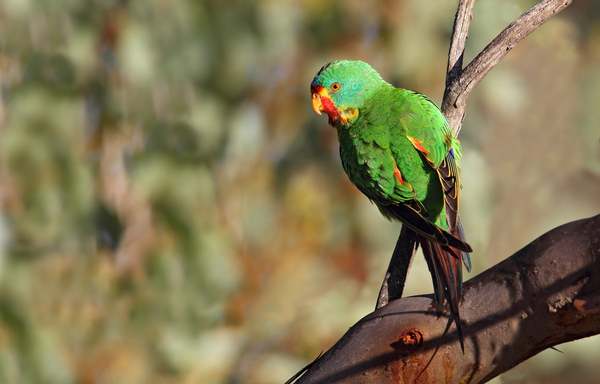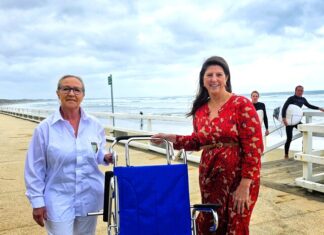A rare parrot found in the Geelong region has joined the state’s most vulnerable and threatened species list.
The swift parrot is now one of 27 species in Victoria that could be extinct over the next 20 years, according to Zoos Victoria.
Professor John Woinarski from Australia’s Threatened Species Recovery Hub said Geelong has been one of the important feeding habitats for the parrot.
“The swift parrot used to be much more common in the region around 10 years ago,” he said.
“There are now only occasional records form the area and there’s a real potential for them soon to no longer be present.”
The swift parrot is one of two migratory parrots left in the wild, joining the orange-bellied parrot that is also sighted in the region, according to Prof Woinarski.
“The species is declining really rapidly and there are great concerns for its extinction if there is no urgent intervention,” he said.
Zoos Victoria biologist Dr Katherine Selwood said there are 1000 breeding pairs believed to remain in the wild.
“The swift parrot has been added to the list due a loss of feeding habitat in mainland Australia and the threat of sugar gliders who are their major predators,” Dr Selwood said.
State government recently announced $3 million to fund Zoos Victoria’s five-year wildlife conservation plan to help threatened species.
But Prof Woinarski said the scale of the issue is “much greater” than the government’s contributions.
“We’re grateful for every possible dollar but the more funding the government can put in, the better,” he said.
“With insufficient funding species will become extinct, that’s the inevitable result.”
Prof Woinarski also acknowledged conservation efforts “start in the backyard” of local communities.
“If people don’t care then the government will get away with neglecting this area.
“It’s important that everyone looks after their environment.
“Efforts such as making sure cats are kept indoors or contributing to tree planting programs can make a difference.”







